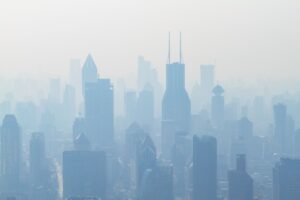Indoor Air Pollution: Potential Risk Factors for Lung Cancer Revealed by Biological Evidence
Table of Contents
Introduction:
Indoor air pollution is a significant concern, particularly for those who cook frequently at home or burn incense indoors. While previous studies have highlighted the potential health risks associated with these activities, there has been a lack of concrete biological evidence to support this link. To address this gap, researchers from National Taiwan University Hospital, Taipei, Taiwan (Ke-Cheng Chen & team) conducted a study to examine the presence of air pollutants in the lungs and estimate their potential risk for lung cancer. The study focused on measuring 14 common air pollutants in pleural fluid, a substance found in the lungs, of individuals with lung adenocarcinoma (a type of lung cancer) and nonmalignant controls.
Methods:
In this study, 39 cases of lung adenocarcinoma and 40 nonmalignant individuals were analyzed. Pleural fluid samples were collected and examined using a technique called gas chromatography-mass spectrometry. This method allowed researchers to identify and measure the levels of 14 common air pollutants present in the lungs.
Results:
After adjusting for age and excluding current smokers, the study revealed that habitual cooking at home and indoor incense burning were associated with an increased risk of lung adenocarcinoma. Specifically, individuals who frequently cooked at home were found to have a 2.22 times higher odds of developing lung adenocarcinoma, while those who regularly burned incense indoors had a 3.05 times higher odds of the same.
Interestingly, when considering gender-specific data, the risks were even more pronounced for females. Women who engaged in habitual cooking at home had a 5.39 times higher odds of developing lung adenocarcinoma, and those who burned incense indoors had a 6.01 times higher odds of the same.
Additionally, the researchers identified specific air pollutants that appeared to be crucial exposure biomarkers for lung cancer. These included naphthalene, ethylbenzene, and o-xylene, which were present in the pleural fluid samples.
Conclusions:
The findings of this study provide important biological evidence supporting the association between indoor air pollutants and the risk of lung adenocarcinoma. Habitual cooking at home and indoor incense burning were identified as potential risk factors for this type of lung cancer.
The results emphasize the significance of indoor air quality and the potential health implications of exposure to common air pollutants. Cooking and burning incense are prevalent indoor activities in many households, and the study highlights the need to be mindful of the pollutants released during these activities.
For women, in particular, the risks associated with cooking and incense burning were even more substantial, underscoring the importance of considering gender-specific exposure patterns.
The study’s identification of specific air pollutants as exposure biomarkers provides valuable information for future research and risk assessment strategies. Naphthalene, ethylbenzene, and o-xylene are known to be present in cooking and incense burning emissions, and their presence in pleural fluid samples suggests that they may play a significant role in the development of lung adenocarcinoma.
Overall, this study emphasizes the importance of taking measures to improve indoor air quality and reduce exposure to harmful pollutants. Awareness of potential risks associated with indoor activities can help individuals make informed choices to protect their respiratory health. Further research in this area will be essential to better understand the mechanisms behind these associations and to develop targeted strategies for preventing lung cancer related to indoor air pollution.
Refrence
https://pubmed.ncbi.nlm.nih.gov/35162188/
Photo by Albert Moreno on Unsplash






